A E Hillman
Serological surveillance reveals patterns of exposure to H5 and H7 influenza A viruses in European poultry
Hillman, A E; Smith, R P; Batey, N; Verheyen, K L P; Pittman, M; Brown, I H; Breed, A C
Authors
R P Smith
N Batey
K L P Verheyen
M Pittman
I H Brown
A C Breed
Abstract
Influenza A viruses of H5 and H7 subtype in poultry can circulate subclinically, and subsequently mutate from low to high pathogenicity with potentially devastating economic and welfare consequences. European Union Member States undertake surveillance of commercial and backyard poultry for early detection and control of subclinical H5 and H7 influenza A infection. This surveillance has moved towards a risk‐based sampling approach in recent years; however quantitative measures of relative risk associated with risk factors utilised in this approach are necessary for optimisation. This study describes serosurveillance for H5 and H7 influenza A in domestic and commercial poultry undertaken in the European Union from 2004 to 2010, where a random sampling and thus representative approach to serosurveillance was undertaken. Using these representative data, this study measured relative risk of seropositivity across poultry categories and spatially across the EU. Data were analysed using multivariable logistic regression. Domestic waterfowl, game birds, fattening turkeys, ratites, backyard poultry and the “other” poultry category holdings had relatively increased probability of H5 and/or H7 influenza A seropositivity, compared to laying‐hen holdings. Amongst laying‐hen holdings, free‐range rearing was associated with increased probability of H7 seropositivity. Spatial analyses detected ‘hotspots’ for H5 influenza A seropositivity in western France and England, and H7 influenza A seropositivity in Italy and Belgium, which may be explained by the demographics and distribution of poultry categories. Findings suggest certain poultry category holdings are at increased risk of subclinical H5 and/or H7 influenza A circulation, and free‐range rearing increases the likelihood of exposure to H7 influenza A. These findings may be used in further refining risk‐based surveillance strategies, and prioritising management strategies in influenza A outbreaks.
Citation
Hillman, A. E., Smith, R. P., Batey, N., Verheyen, K. L. P., Pittman, M., Brown, I. H., & Breed, A. C. (2019). Serological surveillance reveals patterns of exposure to H5 and H7 influenza A viruses in European poultry. Transboundary and Emerging Diseases, https://doi.org/10.1111/tbed.13371
| Journal Article Type | Article |
|---|---|
| Acceptance Date | Sep 19, 2019 |
| Publication Date | Sep 24, 2019 |
| Deposit Date | Oct 5, 2019 |
| Publicly Available Date | Sep 29, 2020 |
| Journal | Transboundary and Emerging Diseases |
| Print ISSN | 1865-1674 |
| Electronic ISSN | 1865-1682 |
| Publisher | Wiley |
| Peer Reviewed | Peer Reviewed |
| DOI | https://doi.org/10.1111/tbed.13371 |
| Public URL | https://rvc-repository.worktribe.com/output/1380313 |
Files
12381_Supporting-information-Table-1-2004−2010-poultry-H5-H7-influenza-A-serological-sampling-by-EU-member-state-and-poultry-category.pdf
(424 Kb)
PDF
12381_Serological-surveillance-reveals-patterns-of-exposure-to-H5-and-H7-influenza-A-viruses-in-European-poultry_Accepted.pdf
(1.2 Mb)
PDF
You might also like
Determinants of Thoroughbred yearling sales price in the UK
(2024)
Journal Article
A study of the impact of the COVID-19 pandemic on equine veterinary care in the UK
(2023)
Journal Article
Gestation Length is Associated With Early-Life Limb Deformities in Thoroughbred Foals
(2023)
Journal Article
Downloadable Citations
About RVC Repository
Administrator e-mail: publicationsrepos@rvc.ac.uk
This application uses the following open-source libraries:
SheetJS Community Edition
Apache License Version 2.0 (http://www.apache.org/licenses/)
PDF.js
Apache License Version 2.0 (http://www.apache.org/licenses/)
Font Awesome
SIL OFL 1.1 (http://scripts.sil.org/OFL)
MIT License (http://opensource.org/licenses/mit-license.html)
CC BY 3.0 ( http://creativecommons.org/licenses/by/3.0/)
Powered by Worktribe © 2025
Advanced Search
